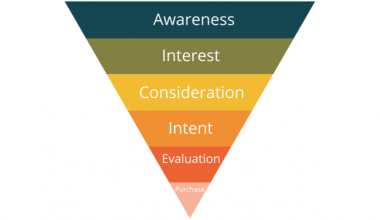Imagine you’re curled up on a Sunday morning, coffee in hand, and ready to catch up on the news. You click on a fascinating headline, only to be greeted with a paywall requesting that you subscribe. Frustrating? Maybe. However, this is gradually becoming the reality for many of us navigating the digital information environment.
I subscribed to The New York Times in 2011 after hitting their paywall for the third time in a week. Initially, it was an inconvenient impediment. But when I became a frequent reader, I realized the importance of the high-quality journalism they produced. This was a watershed moment—not just for me as a reader, but for the entire media sector, which is dealing with dwindling ad sales and the search for sustainable income.
Same way, paywalls have transitioned from an experimental technique to a mainstream business model in the digital age, drastically changing how we access and value online information. They have become a lifeline for many publishers as well as a major force in the commercial world. As a result, in this article, I will explain how paywalls are affecting internet business models, from their origins and types to their reasons, and strategies.
Key Takeaways
- Paywalls have become vital for sustaining high-quality digital content by creating a paid, value-driven consumption model.
- Different paywall types cater to varied audience needs and business goals, from strict access control to voluntary contributions.
- Paying for content can increase its perceived value and deepen user engagement, shifting consumption habits towards quality.
- They offer a more predictable and sustainable revenue source compared to the fluctuating nature of ad-based models.
What is a paywall?

A paywall is a digital barrier that prevents access to specific content on a website. Only customers with a paid subscription or membership can access the content behind the paywall. Paywalls are commonly employed by news websites, online magazines, and other online enterprises that create high-quality material that is expensive to generate. The idea is to create cash for the website or newspaper by charging users for access to its content. This strategy enables content creators to monetize their work successfully.
Consider a paywall to be a gate that prevents access to certain materials. Just as a gate opens and gives people access to a building, a content gate or paywall lets people access parts of your digital content (which is known as gated content or paywalled content). This content may be a podcast, newsletter, blog post, education course, or similar. Unlocking access might be achieved by becoming a subscriber to that podcast, buying a course, or signing up for a membership plan for that blog.
Understanding Paywall
A paywall refers to a way of restricting access to internet information through a paid subscription. Paywalls are commonly used to monetize websites by digital content providers such as newspapers and magazines, as well as their publishing houses. According to recent research by the Reuters Institute for the Research of Journalism, 76% of newspapers in the United States now have a pay model, a 16% increase over 2017. In other words, internet users can no longer read a wide range of online information for free; instead, they are increasingly confronted with paywalls.
Paywalls were first introduced in the mid-1990s when the internet was still in its early stages. Initially, digital information was mostly free, and websites relied primarily on advertisement revenue. However, as the dot-com bubble burst and ad revenues became increasingly volatile, some publishers started to reconsider their revenue models.
The Wall Street Journal became a pioneer in 1996, implementing one of the first paywalls. It was a risky move at the time, given the internet’s ethos of providing free information. In 2011, The New York Times adopted a metered paywall strategy, offering readers a few free articles before asking them to subscribe. This was a revolutionary step, ushering in a new era of digital content commercialization.
When I subscribed to The New York Times, I noticed a change in my spending patterns. I grew to value the depth and quality of the articles more than I did the free ones. This personal experience reflects a larger trend where customers are increasingly ready to pay for content that they perceive as valuable and unique.
How do paywalls work?
When a user engages with a mobile app that employs a paywall, the journey typically unfolds as follows:
- App install: The user downloads the app and begins using it (the install). Initially, the user has access to basic features or a limited set of content for free, which serves to introduce the user to the app’s functionality and value proposition.
- Encounter with paywall: Once the user engages with a trigger event, they encounter the paywall. Examples of common triggers include:
- Scrolling to a certain depth on a page. (i.e. a news app user scrolls past the fold to read the full article, which is blurred as it is ‘locked’.)
- Spending a given length of time in-app. (i.e. a streaming app user has reached the end of a 30-day free trial.)
- Accessing a specific number of pages. (i.e. a gaming app user reaches level 5.)
- Attempting to use premium features: (i.e. a sleep app user taps on a locked sleep story.)
- Decision point: Faced with the paywall, the user must decide whether to continue with the free version of the app, if this is an option, or to unlock the full experience by making a purchase or subscribing. The app may offer various incentives or previews of premium content to encourage the user to make this transition.
- In-app purchase (IAP): If the user decides to access the premium content or features, they will select a subscription plan or make a one-time purchase.
- Access to post-paywall content: Once the payment is processed, the user gains access to the premium features or content behind the paywall.
Types of Paywalls
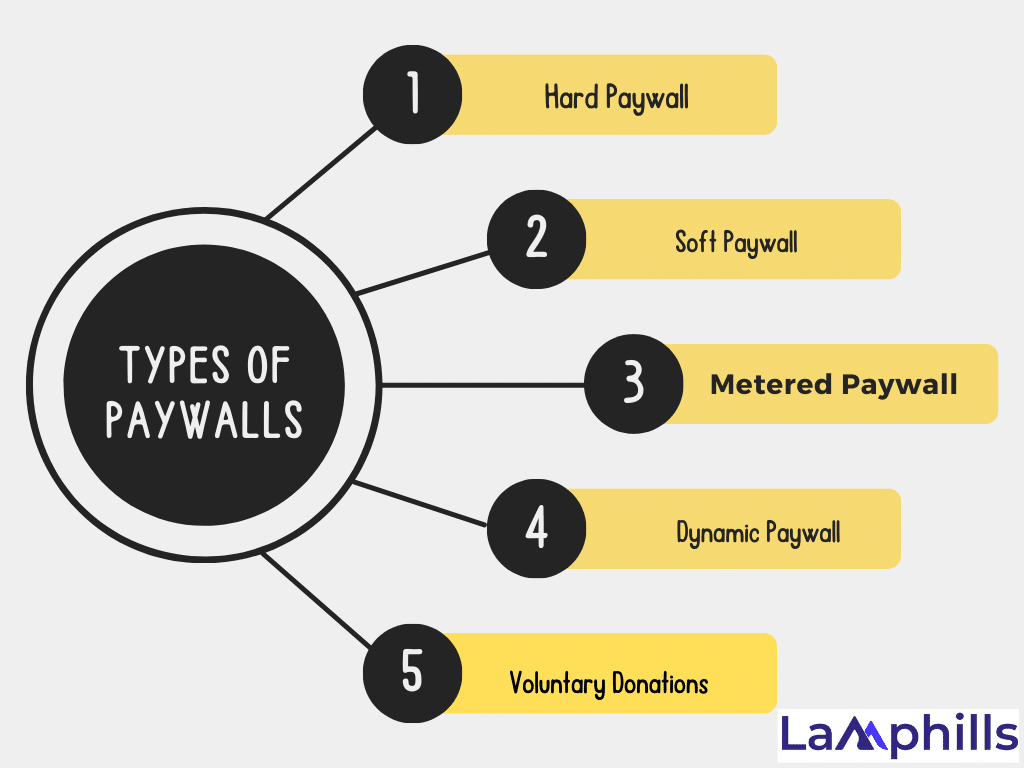
Different kinds of paywalls exist: publishers use different models to offer customers a variety of digital subscription offers. Some are so subtle that readers won’t even perceive them as a paywall, while other models act as hard payment barriers that can’t be worked around. Paywalls are therefore classified into different friction levels.
#1. Hard Paywall
In this arrangement, non-subscribers are denied access to some web material. Users who do not purchase a digital membership from the provider are also unable to read any of its articles. This type of barrier is less widespread because when readers see hard paywalls, they are more likely to seek the information elsewhere. As a result, there is a significant chance that otherwise engaged readers would depart for a competitor.
Furthermore, a high payment barrier has a significant impact on a website’s visitor statistics. As a result, fewer advertisers may be willing to run their ads on these sites. However, there are well-known publications and periodicals with a paywall, like the Wall Street Journal, Financial Times, and British Times.
#2. Soft Paywall
A soft paywall (also known as a freemium model) offers both free material and paid services. Users can access a wide range of content on websites with a soft paywall without incurring fees or completing a membership. Individual articles, on the other hand, are considered premium content and are only available to paying clients. This freemium model is the most popular approach for partially monetizing digital content in the newspaper industry. While this approach is notably successful in France and Germany, it is virtually non-existent in the United States, with only 12% of publishers implementing it.
#3. Metered Paywall
The metered approach is another alternative that reduces the financial barrier. A metered paywall, which derives from the term “meter” for “measure,” is a payment barrier that adjusts dynamically to its customers. In general, all information presented on a website with a metered paywall is free, but each user has a limit on how many articles they can access.
Publishers can track how many articles a visitor reads each month using technical resources (newspapers frequently employ cookies). Once the limit is reached, the user must either buy a subscription or wait until the following month to read free articles again. While users can readily rely on this paradigm, many websites adopting it require user registration, allowing them to better understand their readers’ behavior. In the United States, the New York Times uses the metered model with great success.
#4. Dynamic Paywall
In addition to the metered model, many dynamic payment barriers adapt exactly to the behavior of a website user. Publishers, for example, can analyze data on repeat consumers and user profiles. Publishers can learn about their readers’ reading patterns, hobbies, and the types of articles they expect to read each month after a short time.
A dynamic paywall will rapidly draw the attention of a user who visits the page multiple times per day to read business news. A reader who visits the page only a few times each week and reads a few articles, on the other hand, will continue to be able to read information for free. This dynamic is used in New York Magazine. paywall and calculates the probability that a reader will complete a subscription based on the data. The challenge is to consistently deliver value to make sure readers return.
#5. Voluntary Donations
The most discrete payment model for monetizing digital material is one based on voluntary contributions. More than a million readers made financial contributions to The Guardian so that it could remain free and without a paywall, either as one-time or regular assistance to help make the newspaper viable. Donations to this open paywall model are contributed by readers who appreciate the newspaper’s editorial independence and commitment to investigative reporting. While viewers can freely connect with all the information on the site, a sidebar provides links to several fundraising choices.
Reasons for Paywalls
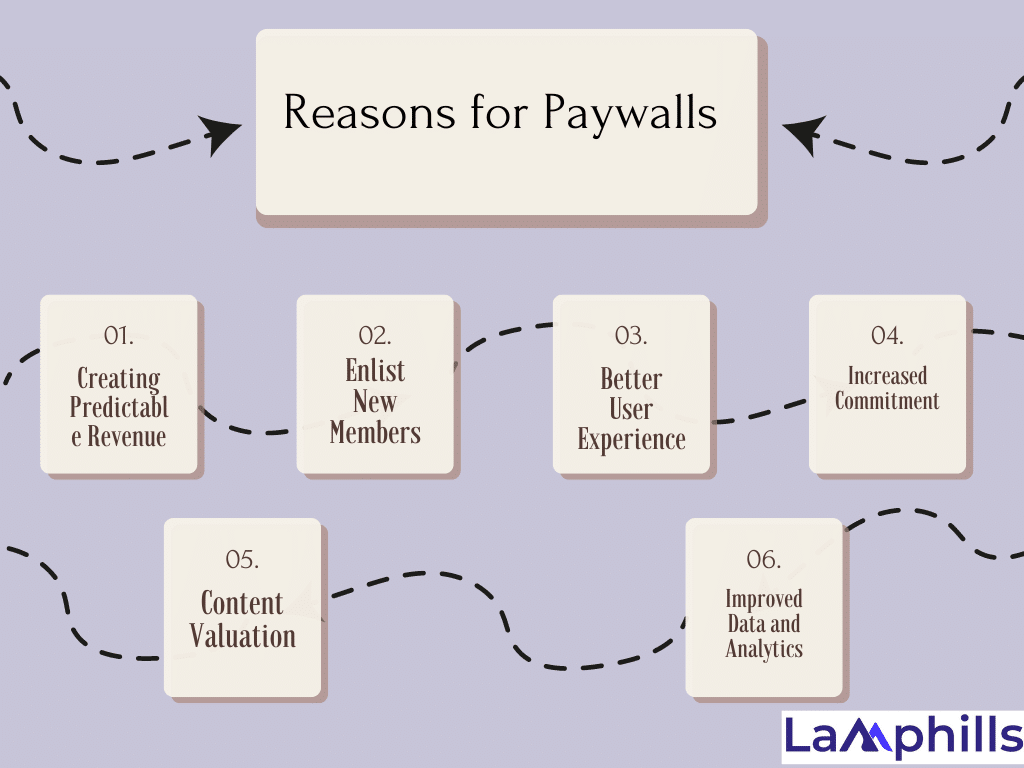
So why do brands even have paywalls? If done right, a paywall can give brands and creators something they need: either revenue, more users, or both. Here’s why
#1. Creating Predictable Revenue
The paywall is an excellent approach to monetizing content, generating the ultimate, subscription-based recurring revenue that businesses can rely on. The New York Times’ digital subscriptions generated about $1 billion in 2022, indicating that the paywall was paying economically.
#2. Enlist New Members
The New York Times’ metered paywall functions similarly to a free trial. Readers can get a sample of the journalism and then pay if they want more. Some hosts employ metered or soft paywalls to expand their membership groups, as visitors can come in for free and then upgrade to a paying plan if they want more.
#3. Better User Experience
Ads are terrible, and many people are willing to pay to escape them. Experience has taught brands like Netflix and Disney+ that people are prepared to pay for access, and platforms do not need to disrupt the experience with intrusive advertisements. Signals quality: Having a paywall can indicate that you care about quality. After all, if people are paying to read your newspaper or view your material, it must be good.
#4. Increased Commitment
We monitor online communities and have discovered that the most active are frequently those with paid memberships. People respect what they pay for, and it might be difficult to convince them that a free community is legitimate.
#5. Content Valuation
Implementing a paywall assigns value to the content, demonstrating its importance to the audience. This strategy can be especially beneficial for niche or specialized information, where people value and are willing to pay for quality. Paywalls make your content stand out from the enormous ocean of free online information.
#6. Improved Data and Analytics
Receive additional information on your users to better understand them. Regularly examine user behavior, subscription patterns, and churn rates. This data can help you improve your plan for optimal effectiveness.
Implementing an Effective Paywall Strategy
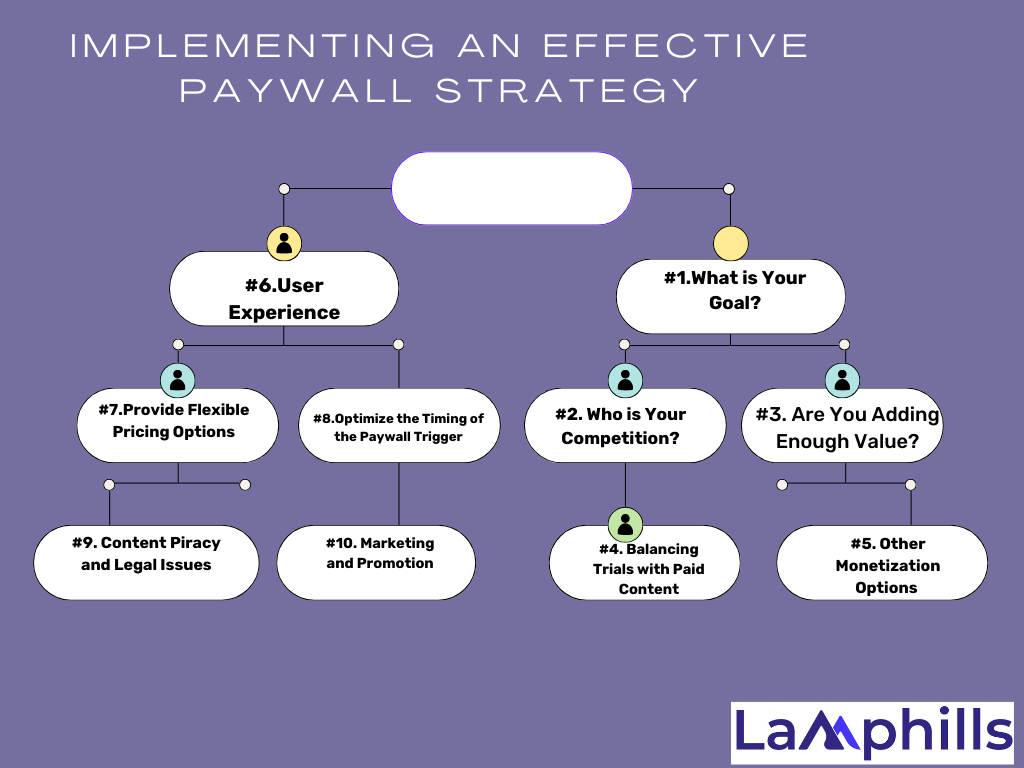
Throughout this journey, the effectiveness of a paywall in converting free users to paying subscribers often depends on the perceived value of the premium content or features, the user experience in navigating the paywall, and the ease of the transaction process. Here are some considerations when forming your paywall strategy:
#1. What is Your Goal?
When writing a post, article, or podcast, consider the (main) purpose of the content. Are you looking to boost your brand’s awareness and establish yourself as a thought leader in your industry?
Are you wanting to monetize/make money from your content? Do you want to create your database (also known as ‘producing leads’)? Answering these questions will help you determine what content to gate or prohibit.
If implementing a paywall or a metered paywall significantly decreases the quality of your members’ experience, you may want to reconsider.
- What content should be paywalled?
#2. Who is Your Competition?
There’s little purpose in charging someone for something they can receive for free elsewhere! When researching your next piece, see if there is any content on a related business or topic that is simply and freely available.
There’s nothing wrong with writing additional content on the same topic, but as always, make sure your audience is getting something from you that others aren’t – this could be a firsthand experience or a unique insight that no one else can provide.
#3. Are You Adding Enough Value?
If your content does not provide significant value to the audience, it should not be walled off. You must provide material that is not available elsewhere, or it must be presented in a format with a high ‘production value’.
Longer content, such as in-depth analysis and ebooks or downloads, is appropriate for gated/paywalled content, but shorter content, such as blogs of up to 1000 words, is usually better suited for ungated/free content. Remember that paywalls are not the only way to monetize content. From advertisements to courses, patronage to sponsorship, you may find another strategy that works for your brand.
#4. Balancing Trials with Paid Content
For most brands, finding the balance between using content to attract new members and monetizing the content can be a delicate process. Even big companies are mining their data to understand how to squeeze as much revenue from the paywall without jeopardizing growth.
#5. Other Monetization Options
This comprehensive checklist below will guide you through various strategies to help you generate revenue from your digital content without relying solely on paywalls.
Paywalls aren’t the only way to monetize content. From ads to courses to patronage to sponsorship, you might find another model that works for your brand.
#6. User Experience
If adding a paywall or a metered paywall dramatically reduces the quality of your members’ experience, you might want to reconsider it.
#7. Provide Flexible Pricing Options
Offer a variety of subscription plans or one-time purchase options to cater to different user preferences and price sensitivities. This could include monthly, quarterly, or annual subscriptions, and possibly a trial period that allows users to experience premium features before committing financially.
#8. Optimize the Timing of the Paywall Trigger
Introduce the paywall at a key point in the user journey where engagement is strong. Avoid presenting it too soon, which may repel consumers before they discover the app’s usefulness, but also don’t wait too long, since the user may be disrupted or surprised by its arrival. Most importantly, do not introduce it when a user first opens the app–they chose free software over a paid app for a reason, and they do not expect to pay for it straight away.
#9. Content Piracy and Legal Issues
Protecting content from unauthorized access and navigating legal challenges are ongoing concerns for businesses with paywalls. Content piracy remains a significant threat. Technologies like Digital Rights Management (DRM) can help safeguard content against unauthorized access and distribution, but they also add complexity and cost to the implementation.
#10. Marketing and Promotion
Effective marketing and promotion are crucial for converting free users into paying subscribers and showcasing the value of your premium content.
- Converting Free Users to Subscribers:
Strategies like offering free trials, limited-time discounts, or content previews can help entice free users to subscribe. Highlighting the unique benefits of your premium content through targeted marketing campaigns can also drive conversions.
Case studies: Companies Using Paywalls Effectively
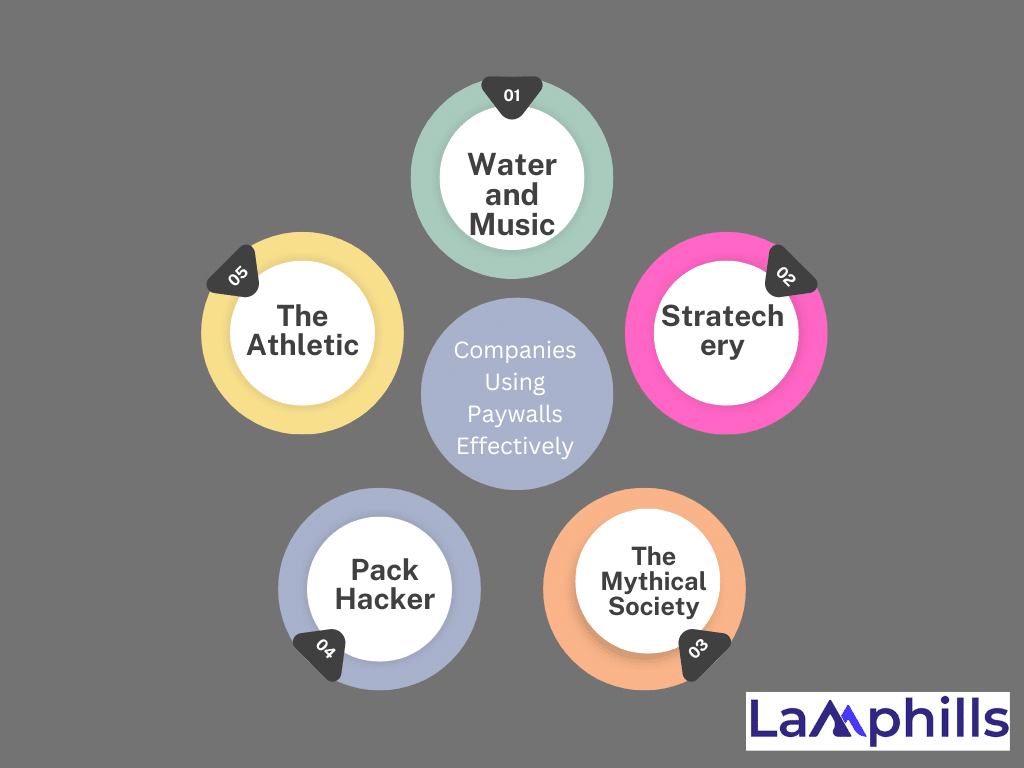
These famous publications should help to demonstrate how companies can effectively use paywalls to monetize their content and provide exclusive value to their members.
#1. Water and Music
Tech and music writer Cherie Hu founded Water and Music, a research and intelligence network for the new music business. The company’s objective is to make the music industry more cooperative and transparent via a peer-to-peer approach to knowledge exchange, on themes ranging from streaming to Web 3.
#2. Stratechery
Ben Thompson, a technology analyst, runs Stratechery, a subscription-based model for his in-depth research on the tech sector. Access to daily updates, community forums, and exclusive articles are all included with the paid membership.
#3. The Mythical Society
Rhett and Link, the YouTubers and internet celebrity hosts of Good Mythical Morning welcome you to experience unparalleled dimensions through their gated content platform, Mythical Society. Membership provides access to behind-the-scenes footage, intimate vlogs, one-of-a-kind goods, and other benefits.
#4. Pack Hacker
Tom Wahlin developed Pack Hacker, a review website that sources and evaluates items for travel and everyday use. He and his team feel that the finest reviews and guidelines come from unbiased real-world testing and usage. Paid members have access to detailed packing guides and special videos.
#5. The Athletic
The Athletic is a sports news platform that offers premium content and in-depth coverage of various sports. They have successfully implemented a subscription-based model, attracting sports enthusiasts who seek high-quality sports journalism.
How do paywalls impact online users?
Paywalls restrict access to certain online content, requiring users to pay or subscribe for full access. While they can be frustrating, paywalls also support quality journalism and content creation.
Why do publishers implement paywalls?
Publishers implement paywalls to monetize their content, generate revenue, and support quality journalism. Paywalls help sustain the integrity of online ecosystems by ensuring fair compensation for creators and maintaining high editorial standards.
How can users support quality journalism without encountering paywalls?
Users can support quality journalism by subscribing to reputable publications, donating to independent creators, and advocating for policies that promote transparency and accountability in digital content distribution.
What role do paywalls play in the digital landscape?
Paywalls play a crucial role in the digital landscape by incentivizing quality content creation, ensuring fair compensation for creators, and maintaining editorial integrity. While they may pose challenges for users, paywalls contribute to a vibrant and sustainable online ecosystem.
Conclusion
In this digital age, paywalls have evolved from simple income instruments to a disruptive force in online business models. They incentivize the creation of high-quality content, promote deeper user involvement, and provide a long-term revenue stream that is not influenced by advertising markets.
Now, understanding the dynamics of paywalls, whether you’re a publisher, content creator, or consumer, can help you make informed decisions about how to create, offer, and consume digital content in a way that benefits everyone. So the next time you encounter a paywall, consider what lies beyond it. It might just be the key to a future where content is valued not just for its clickability, but also for its quality and impact.




